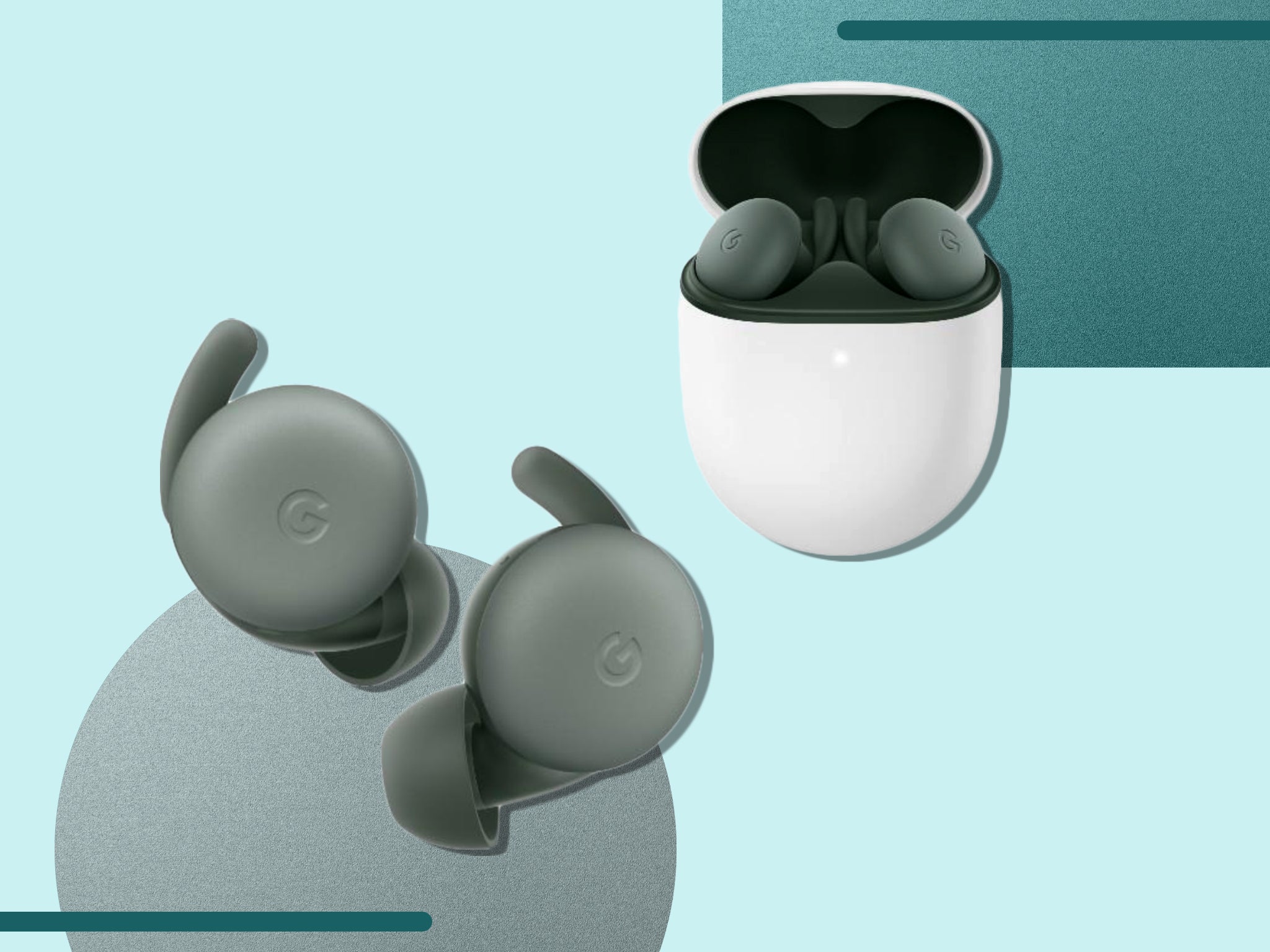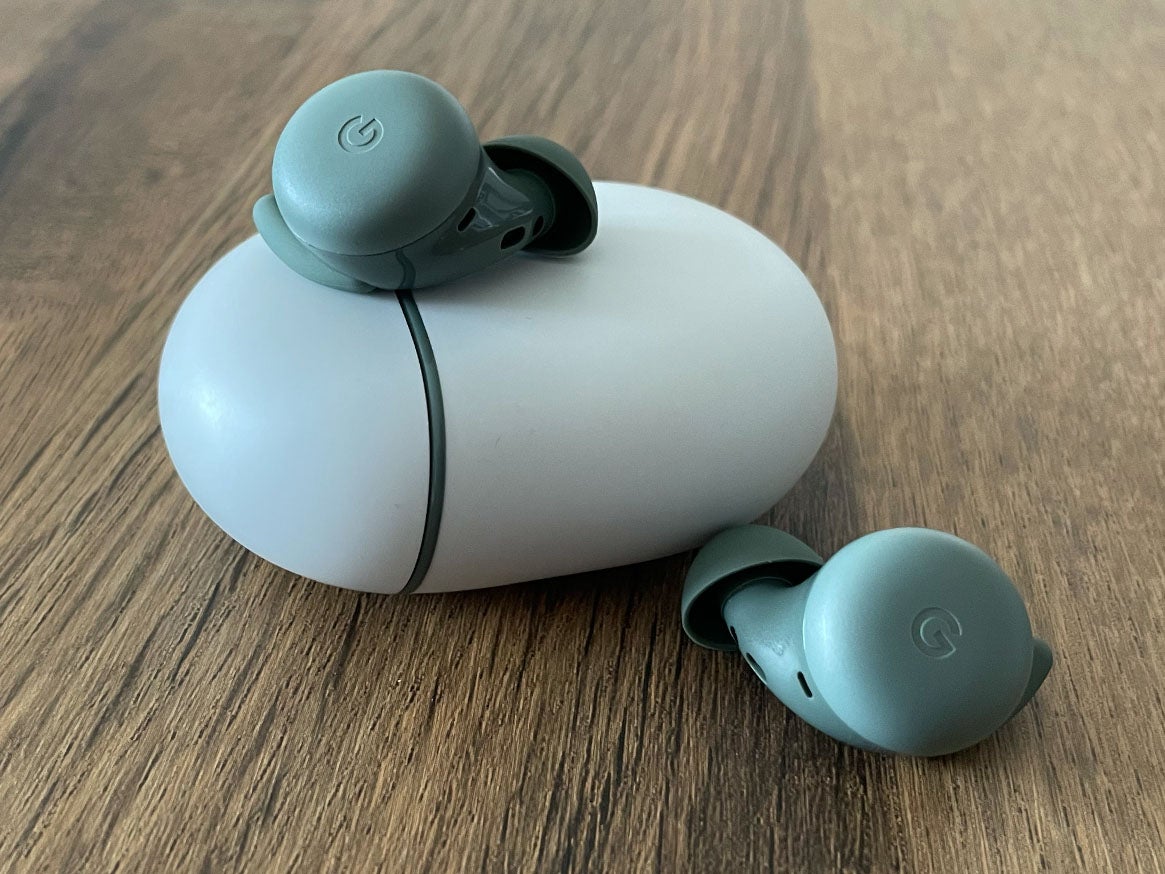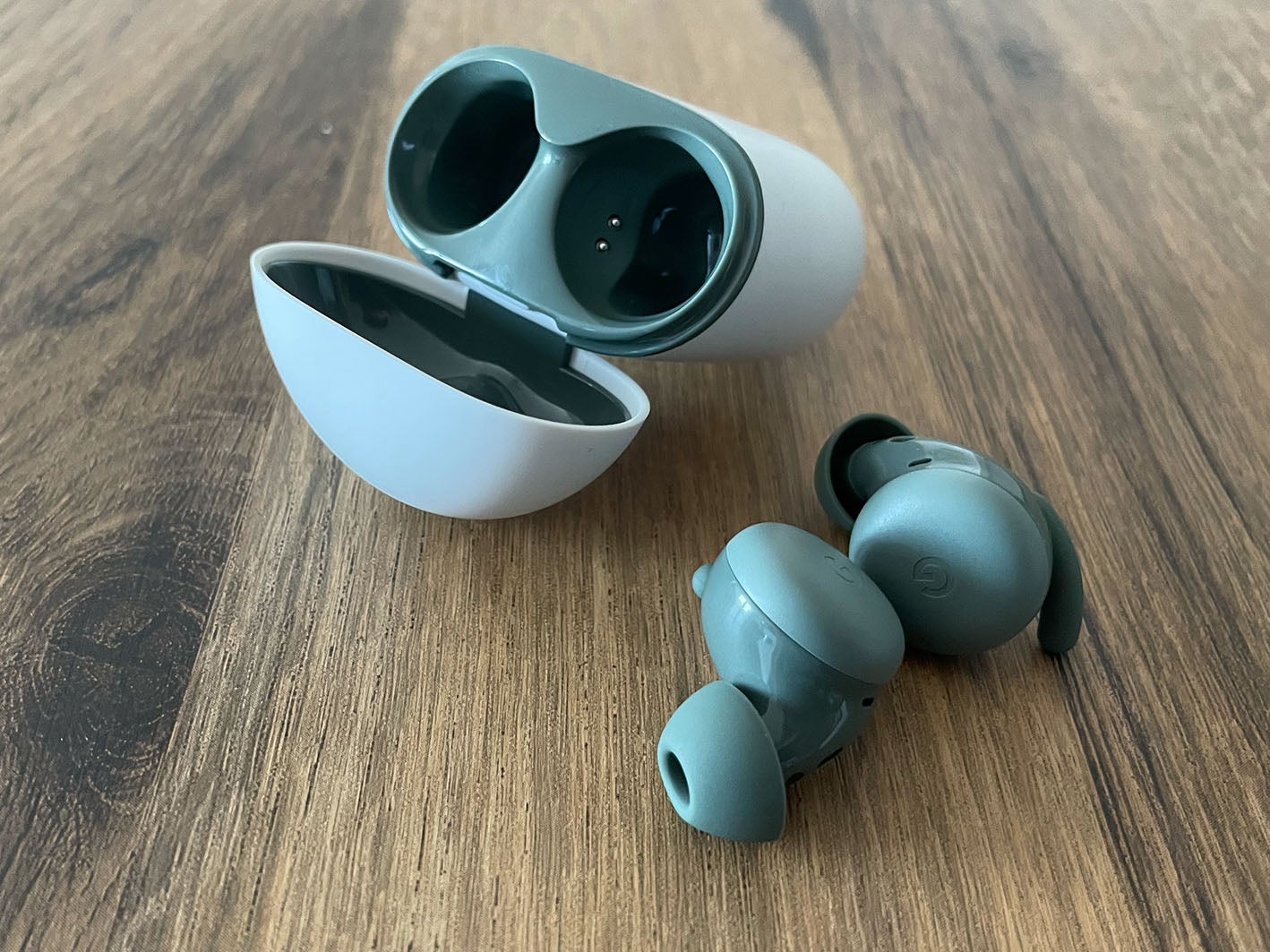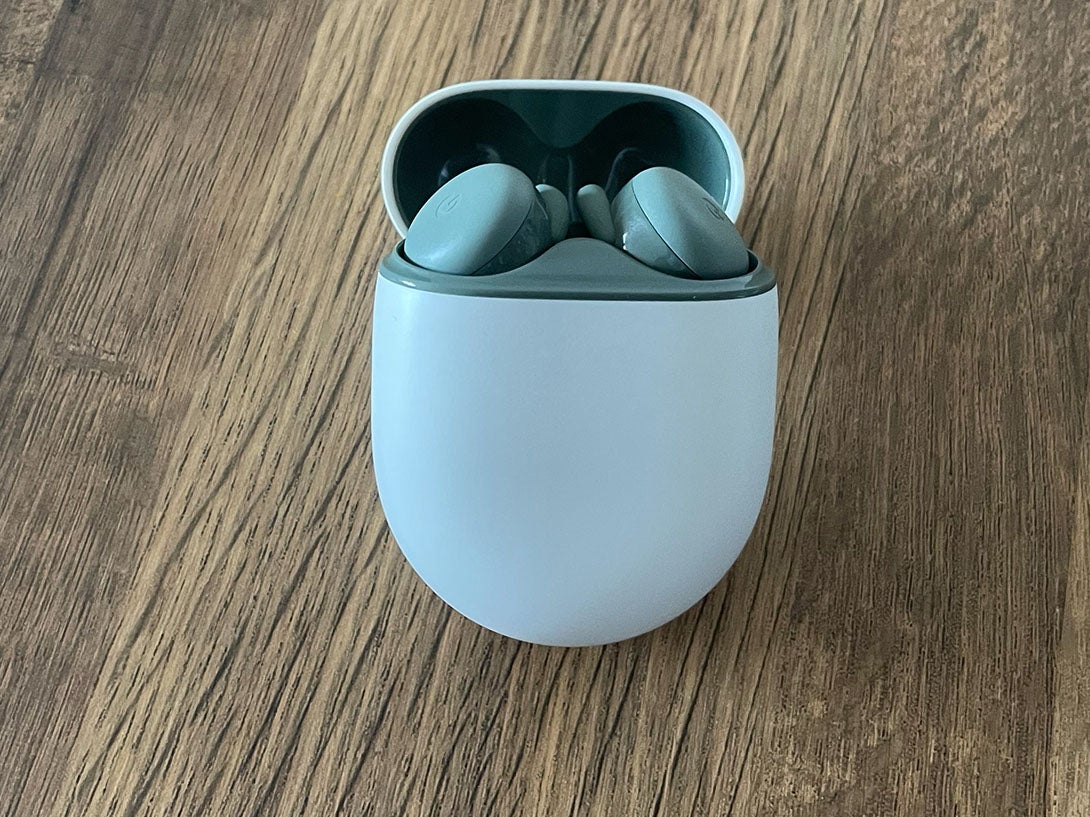The Independent's journalism is supported by our readers. When you purchase through links on our site, we may earn commission. Why trust us?
Google Pixel buds A-series review: Finally, AirPods for the Android crowd
The big G cranks out an affordable pair of earphones that will give Apple a run for its money

Every single week, it seems like a different company announces a new set of wireless earbuds, boasting a new revolutionary feature or the best noise cancelling technology. In just the last week alone, we’ve seen the launch of both Nothing’s ear 1 earbuds and Bang & Olufsen’s beoplay EQ buds.
Google’s Pixel buds A-series earbuds, which were announced all the way back in June, are finally here to join the noisy fray in the UK. They’re a budget follow-up to Google’s Pixel buds 2 (£199, Freemans.com), released in 2020. Think of them as the cheaper equivalent of the Pixel 4a to the Pixel 4, or the AirPods to the AirPods pro.
These small popcorn-shaped earphones look exactly like their more premium predecessors, but trade away a few key features for a lower price tag. To nobody’s surprise, they don’t have active noise cancellation, but are still neatly integrated with the Android ecosystem. The A in A-series is assumed to stand for affordable (although Google has never admitted it), after all.
We’ve been testing them for a couple of weeks in different environments to see how they stack up against other wireless headphones, and of course, pitting them against the almighty Apple AirPods (£124.98, Amazon.co.uk) sans ANC themselves. Want to know what we think? Keep on reading below.
Read more:
Google Pixel buds A-series: £99.99, Currys.co.uk

- Driver: 12mm dynamic speaker driver
- Waterproofing: IPx4 (splash/sweat resistant)
- Dimensions: 20.7mm x 29.3mm x 17.5mm
- Charging case dimensions: 63mm x 47mm x 25mm
- Weight: 5.06g (each earbud), 52.9g (charging case with earbuds)
- Battery life: Up to 5 hours, up to 24 hours with charging case
- Rating: 7/10
The first thing you’ll notice when you glide the A-series out of their pristine white box is that that the dinky egg-shaped charging case is exactly the same as the more expensive Pixel buds 2. It’s cute, compact and slightly lighter than the Pixel buds 2’s charging case. The hinge feels nice and strong, just don’t push it back forcefully or its plastic exterior will probably snap, but it does close in a satisfyingly similar way to the AirPods’s magnetic shutter.
The A-series comes packaged with three different eartips – small, medium (already attached) and large, as well as a USB-C to USB-A charging cable. There’s no wireless charging here in the Pixel buds A-series, however, which is the first feature departure from the more expensive Pixel buds 2.
The buds themselves, again, look just like their pricier counterpart – although they come in different colours, and are actually slightly smaller dimension-wise. We tested the gorgeous dark olive variety, but you can buy them in clearly white as well. They’re not attached to any stems either, essentially fitting discreetly and snugly in our ears like small balls of Maltesers. There’s also a little stabiliser fin, which you twist upward to press into the triangular fossa in the ear, helping them stay put when we were rigorously shaking our head at our solo dance party for one.

Ultimately, they feel comfy, they’re discreet, and we like that they’re designed with pressure-relieving vents for those (like us) who get earbud claustrophobia when their lugholes are clogged.
Why do we call them AirPods for Android? Because, just like the AirPods and the iPhone, the A-series integrate seamlessly with Android devices. They feature Google’s fast pair tech, for one, meaning you only have to bring them close to your Android device to pair them together. Plus it’s got that fancy real-time translation feature, and the Google Assistant is always at hand if you need something when the buds are in your ears. Live translation is a little bit laggy, meaning it’s not a completely real-time experience when you’re in the throws of a conversation, but we’re expecting this to improve as the feature matures.
There are touch controls on the side of each earbud to pause, skip and rewind tracks, but we were a little sad that Google ditched the really useful swiping feature found on the Pixel buds 2, which allowed us to increase and decrease the volume without having to take our phone out of our pocket or ask G. Assistant to do it for us. If you’ve been wearing AirPods, you can probably live without that feature anyway, since it isn’t found on Apple’s buds.

There’s no active noise cancellation on the A-series, but there isn’t any ANC on the Pixel buds 2 either, so we’re not entirely surprised by their absence here. Instead, you’ll find a feature called adaptive sound on the A-series, which needs to be activated in the Pixel buds app. Instead of blocking out sound, it uses the microphones to listen to external sound and increase or decrease the volume based on that feedback. A loud train passing by? Volume up. There’s a slight delay in how this feature works in practice, however, with the volume only toggling up a few seconds after the noise has disrupted our music.
Sound quality is pretty impressive for a budget pair of earbuds, although they definitely skew toward the bassier side, with less emphasis on mids and those twinkly highs heard in Lorde’s new Solar Power album, which doesn’t really show off the detail we’d like. That said, soundstage feels pretty wide.
You’ll get around five hours of playback when listening to music or 2.5 hours when chatting over the phone. The charging case holds up to 24 hours of charge.
The verdict: Google Pixel buds A-series
The Pixel buds A-series are Google’s third go at true wireless earbuds, and with them, the company is bringing that integrated Google experience to more people thanks to its budget-friendly price tag. They look good, sound good (enough) and feel comfortable to wear. Adaptive audio can be a bit hit and miss and the live Google translation might need a bit of work, but on the whole, we’re pretty pleased with these.
While there’s no active noise cancellation or volume swipes, we’re still impressed that Google has managed to pack most of the same things we loved about the Pixel buds 2 into the cheaper model. And we’re big fans of the fact that there’s no ugly stem sticking out of your earholes like the AirPods. Finally, the Android gang has an affordable pair of AirPods of their own.
Voucher codes
For the latest discounts on wireless earbuds and other tech offers, try the links below:
Looking for more top-rated audio gear? Check out our round-up of the best wireless headphones in 2021
